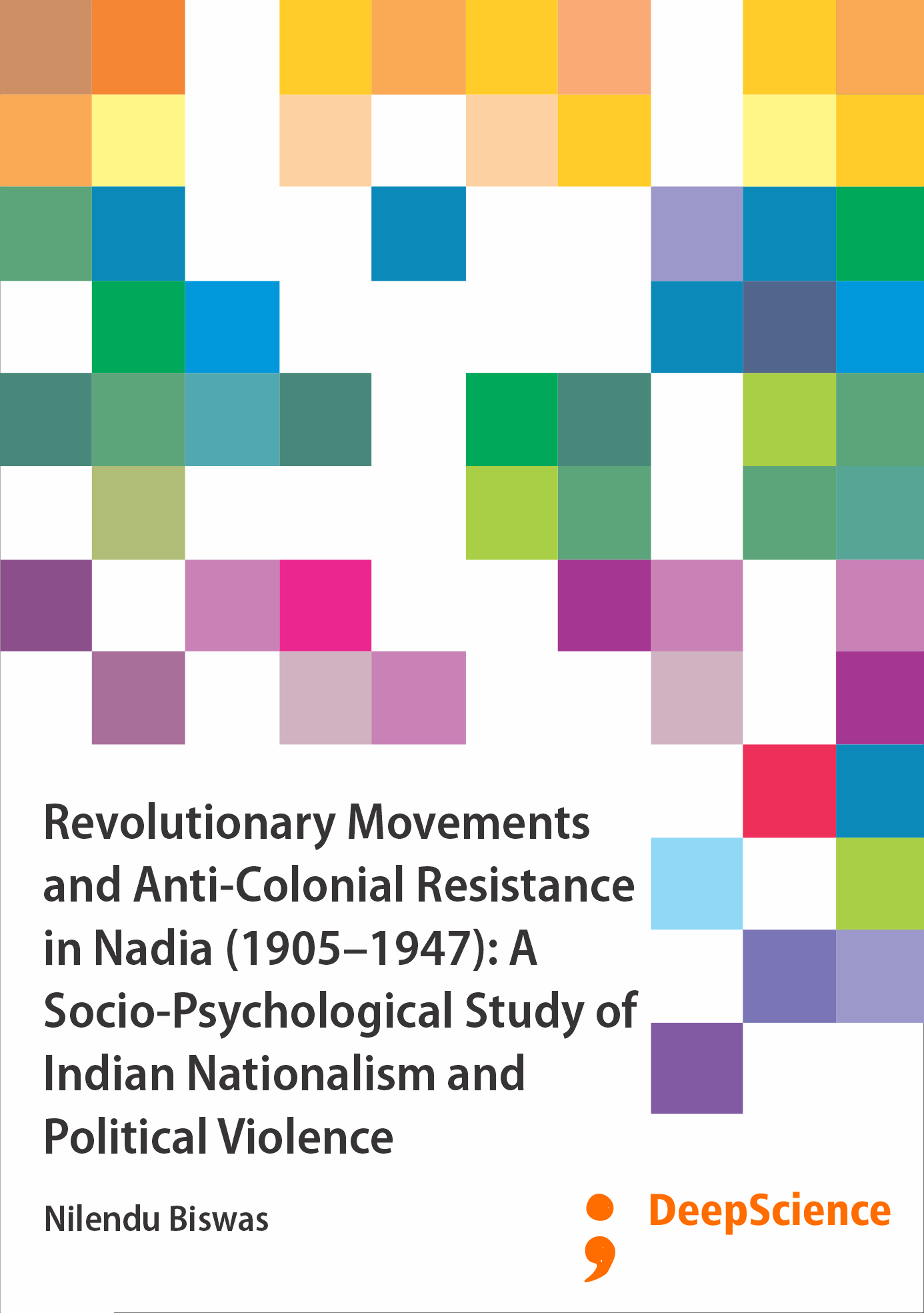Revolutionary Movements and Anti-Colonial Resistance in Nadia (1905–1947): A Socio-Psychological Study of Indian Nationalism and Political Violence
Keywords:
Anti-Colonial Movements , Revolutionary Nationalism, Political Violence, Freedom Struggle, Socio-Psychological Analysis, Cultural Resistance, Psychology of NationalismSynopsis
The continuous events of the ongoing process are moving forward through history. In this process, the continuity of history has been hindered at times due to the lack of adequate and appropriate information. Nevertheless, efforts are being made to maintain continuity as much as possible in the light of ancillary and other information. Many unknown facts about history are being discovered and revealed in the light of new research by historians, archaeologists, and researchers. Also, the interpretations and ideas of history that were previously discovered or presented are changing. In this way, history is changing through the discovery of new information and the reinterpretation of old information. History is gaining new recognition, expanding its scope.
But the idea of a special style in the study of history has recently gained widespread popularity. This concept is the study of regional history, which ranges from a small region to the boundaries of a subdivision or district. The importance of regional history is that in this process it is possible to obtain thorough descriptions and information about the overall aspects of one or more areas. In addition, the historical relics scattered throughout the area can be seen up close. The local people, their culture, the oral history of their ancestors, and the stories they tell provide invaluable historical information.
The history of the liberation struggle is scattered in different parts of the country. In different districts of different provinces, many priceless histories remain unpublished, neglected and disrespected. Even these small pieces of information, which are waiting to be destroyed, can change the face of history. Like other districts in the Indian independence movement, the waves of revolution had hit Nadia in huge waves. But apart from the sunset of the country's independence in the wilderness of Plassey and the blood-stained history of the Indigo Rebellion, other events were not discussed in the same way.
In fact, as soon as we pronounce the name ‘Nadia’, a tragic picture of the terrible life of the farmers, who are suffering from the oppression of the indigo farmers, appears before our eyes. The story of the oppression of the indigo farmers has been brought to light by the pen of Dinabandhu Mitra. The anti-British activities of Bishnucharan Biswas, Digambar Biswas, Meghai Sardar and others gave impetus to the extremist movement in Nadia and Bengal. Nadia became one of the centers of the Indigo Rebellion. Although the Indigo Rebellion was put down by severe repression, it continued to smolder like a smoldering fire. That smoldering fire gave rise to a fierce extremist movement in the early 20th century. Gradually, Nadia became one of the centers of revolutionary activity running parallel to the national movement.
This Nadia district was once again reborn in the early 20th century to the extremist movement. Although the national movement of that time was led by the National Congress, the movement's methods and policies proved futile and fruitless to many young people. Therefore, unable to tolerate the moderate activities of national leaders on the one hand, and the brutal oppression of the British government in the name of suppressing the movement on the other, a group of young people took up arms. Nadia was no exception. Many young people in Nadia were attracted by the extremist ideology of Aurobindo Ghosh or Barindra Kumar Ghosh and got involved in revolutionary activities.
The budding youth did not tolerate the atrocities of the British rule silently. In many cases, they were able to instill fear in the minds of the British by secretly assassinating high-ranking British officials. Since the direct route was not possible, the young people had to follow a different approach. It was in this context that Jatindranath took up firearms, Basanta Biswas threw bombs, and Bina Das came forward with daring acts like shooting Stanley Jackson, the then Governor of Bengal, with a pistol. Along with them, many other teenagers, young men and even young girls also crossed the four walls and joined extremist activities. Although not directly, the activities of all these revolutionaries terrified the British government.












